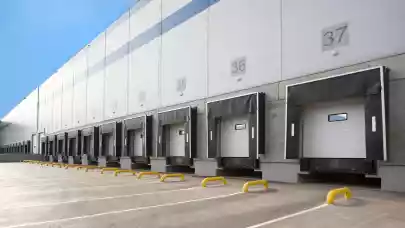
The first quarter of 2020 ended on the industrial market with good results on both the demand and supply side. Poland’s total warehouse stock surpassed the 19 million sqm mark, reveals a report by Cushman & Wakefield.
Key findings:
- The total leasing transaction volume hit 956,000 sqm, the second-highest take-up in the first three months of a year in the history of the Polish market.
- New leases and expansions accounted for 82% of the total take-up, confirming that the market remains in very good health.
- In Q1 2020, new warehouse projects delivered a total of 428,000 sqm to the market, of which more than 40% was completed in the Wrocław region.
- Development activity remains very robust with close to 2.2 million sqm of warehouse space currently under construction.
- There are new projects underway across all 13 regional markets. More than 50% of the development pipeline will be delivered to Poland’s two largest markets: Warsaw and its suburbs, and Upper Silesia.
- At the end of March 2020, there was approximately 1.4 million sqm of vacant warehouse space, accounting for 7.4% of Poland’s total industrial stock.
- Warehouse rents held firm on most regional markets.
Take-up
Leasing activity remained robust in Q1 2020 as the total transaction volume reached almost 960,000 sqm, the second-highest result in the first three months of a year in the history of the Polish market. Net take-up comprising new leases and expansions hit nearly 790,000 sqm, accounting for 82% of all deals. This is an outstanding result indicating that the market is in good health. In recent years, net take-up accounted for approximately 65-70% of gross take-up while renegotiations made up about 30-35%.
“In the first quarter of 2020, lease renewals accounted for only 18% of gross take-up, a clear indication of occupier demand for new or additional space required for organic business growth. Historically, the share of renegotiations in total take-up always increased in more challenging times on the market,” says Joanna Sinkiewicz, Partner, Head of Industrial & Logistics, Cushman & Wakefield.
Core locations remained in strong demand as 85% of all deals were transacted on Poland’s five key warehouse markets. The strongest leasing activity was recorded in Warsaw (236,000 sqm) and Upper Silesia (199,000 sqm). Central Poland, Wrocław and Poznań saw leasing volumes at between 120,000 sqm and 130,000 sqm.
Warehouse take-up came predominantly from retailers and logistics operators accounting for 24% and 23% of the leasing volume, respectively. Demand for additional space was driven across almost all sectors by a shift in sales and the growth in online retail sales.
Supply
Warehouse supply totalled nearly 430,000 sqm, of which 43% was delivered to the Wrocław market. Another 2.18 million sqm is currently under construction. The highest concentration of development activity is in Warsaw and Upper Silesia, whose development pipeline stands at 1.2 million sqm, accounting for 55% of all projects underway in Poland in March 2020. There are, however, new projects under construction on virtually all regional markets. Tiricity and Wrocław remain very active with a total of nearly 500,000 sqm of warehouse space underway in these markets.
The development pipeline includes diversified products such as standard regional multi-let logistics parks, BTS projects and urban parks largely supporting last-mile logistics.
“The rate of speculative construction stands at a high of around 46% while the remaining 53% of warehouse space has been secured under pre-lets. Developers with the largest share in the speculative development pipeline are Panattoni, Hillwood and 7R SA. The current uncertainty caused by the coronavirus pandemic will undoubtedly weaken developers’ and investors’ appetite to commence speculative projects,” says Adrian Semaan, Research Consultant, Industrial & Logistics, Cushman & Wakefield
Vacancies
The overall vacancy rate remained unchanged at 7.4% quarter-on-quarter, but was up by 1.8 pp compared to where it was a year ago, largely due to developers increasingly committing to speculative construction last year. Of the five core regional markets, Central Poland reported the highest vacancy rate at 10%, down from 13% quarter-on-quarter, largely due to the large lease for more than 50,000 sqm concluded by a retailer in Exeter Park Stryków.
By contrast, Wrocław saw its vacancy rate soar from just 3% three months earlier to 8.9%. This upward movement was driven mainly by the substantial new supply. Vacancy rates remained stable in Upper Silesia (7.3%), Poznań (8.6%) and Warsaw suburbs (5.3%) while those for smaller regional markets ranged between 1.8% in Szczecin and 7.5% in Krakow.
Rents
Given the current dynamics of change, rental levels and changes are a concern for the industrial market. Rental rates are impacted by many market metrics and their evolution, including occupier demand, overseas investment funds’ interest in industrial assets, costs of bank financing, construction costs, competition among developers, and the availability and costs of development lands.
“Each of these factors could be the subject of an in-depth analysis. Consider demand, for example. Will coronavirus weaken demand for warehouses? Some tenants have seen their business hit hard by the current situation and have asked landlords for some temporary support in the form of reduced or deferred payments. Such requests are carefully reviewed by landlords on a case-by-case basis. Support is temporary and involves postponement of payments till later or lease extensions,” says Joanna Sinkiewicz
Rental rates remained unchanged in Q1 2020. In addition, we expect base rents to hold firm throughout 2020 at €2.50-3.80/sqm/month for big-box warehouses and at €4.00-5.25/sqm/month for SBUs. Effective rents stand at €2.00-3.20/sqm/month, depending on project location. Looking ahead, financial lease incentives are likely to be scaled up slightly, largely due to more speculative space coming through in the coming months.
Outlook
“The present situation is very challenging for everyone, both tenants and landlords. However, most are seeing the current reality as a challenge and trying to adapt to the new situation. The industrial market is, therefore, doing relatively well compared to other commercial real estate sectors. Having said that, the overall picture is rather complex. Tenants from some sectors are struggling with enormous business difficulties and making efforts to stay afloat. Problems besetting the rapidly growing automotive industry in Poland include reduced demand, the suspension or significant limitation of manufacturing processes, with investment decisions being postponed. Some tenants are reporting moderate falls or replacing less profitable business activities with those that will perform better in the current situation. Some companies are growing and developing at a much faster pace than ever before, largely powered by the accelerated growth in online retail sales. The momentum of action and change is strong,” says Joanna Sinkiewicz.



